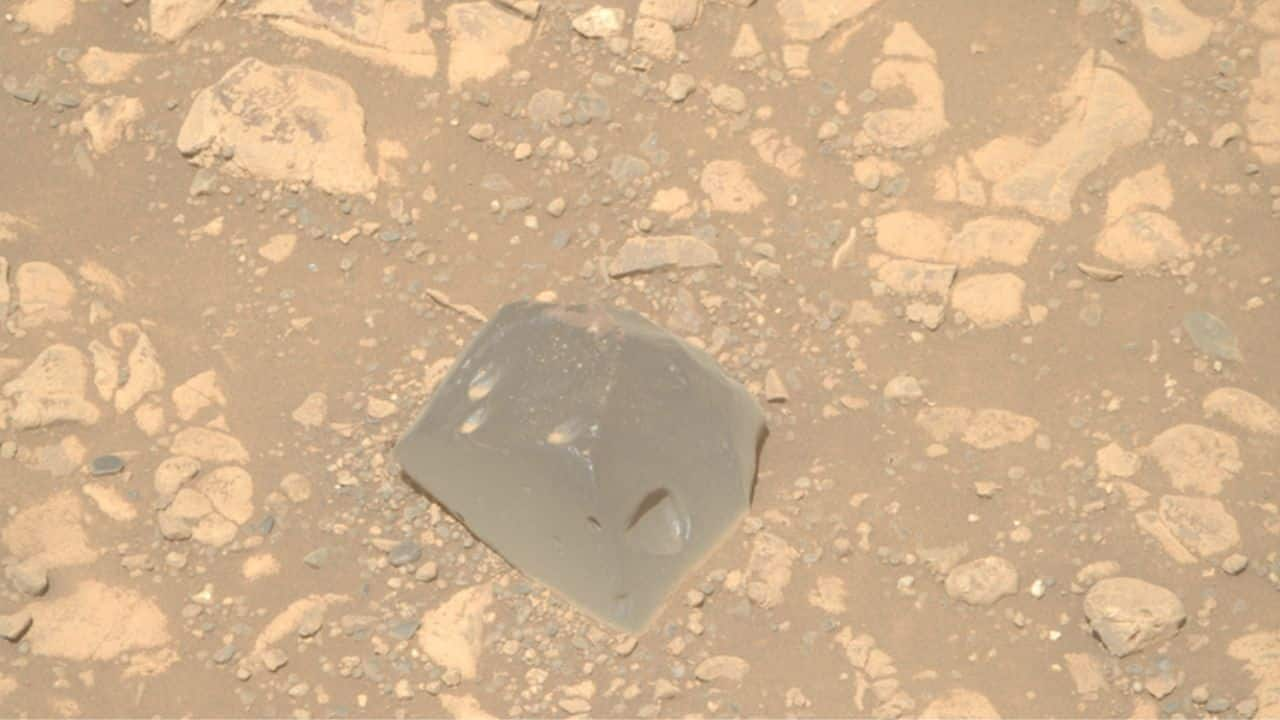Mars attracts attention in an odd way. This time, it has to do with a skull-shaped rock rather than cold poles or old rivers. This unsettling discovery, which was made by NASA's Perseverance rover, has sparked scientific interest and brought up new issues regarding the Red Planet's geological history.
Strange shape and dark surface catch scientists’ eyes The rock, now nicknamed “Skull Hill”, was found on 11 April on the rim of Jezero crater. It was photographed using the Mastcam-Z instrument aboard the rover. While the surrounding terrain is dusty and light in colour, Skull Hill stands out with its darker tone, sharp angles, and surface full of tiny pits.

NASA described the object as a “float rock” that sharply contrasts with the lighter surroundings. Unclear origin adds to the mystery NASA scientists are still unsure how the rock got there. One theory suggests the pits may have formed from erosion — either by wind or through the removal of clasts, which are small rock fragments.
Another possibility is that Skull Hill was hurled to this location by a meteor impact, making it a traveller from elsewhere on Mars. NASA also believes it could be an igneous rock, shaped by volcanic processes and later eroded from a nearby outcrop. It's interesting that its gloomy hue makes scientists think of meteorites that the Curiosity rover previously discovered in Gale Crater.
In order to ascertain the rock's actual origin and the possible path it took across the Martian surface, the scientific team is still investigating it. Life on Mars? Old questions meet new clues The discovery of Skull Hill is the latest in a series of Mars findings that raise deeper questions. In January, NASA’s Mars Reconnaissance Orbiter captured images of frozen sand dunes in the planet’s northern hemisphere.
Unlike Earth’s moving dunes, Mars’ kidney-shaped formations appeared strangely still. In October last year, scientists suggested that microbes might survive beneath Mars’ icy surface. The study found that sunlight could reach shallow pools under frozen layers, potentially allowing photosynthesis — a basic condition for life — to occur.
Mars, though barren and cold today, once had a magnetic field. New data shows it may have lasted until 3.9 billion years ago — more recent than previously thought — boosting the idea that life-friendly conditions may have existed longer than assumed.
For now, Skull Hill offers no answers, only more questions. But each unusual rock and frozen dune brings us closer to understanding the complex past — and maybe even the future — of Mars..














